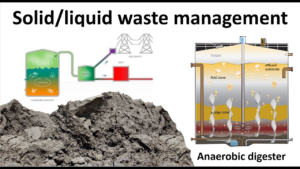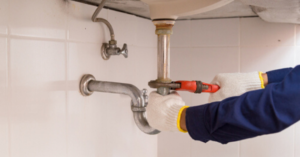There are several ways to dispose of liquid waste. These include incineration, deep-well injection and recycling or reuse. The type of disposal method you choose will depend on factors like the availability of land space, cost and the environmental impact of each technique.
Businesses that generate large volumes of liquid waste must follow strict guidelines for safe disposal. Examples of this waste include sewage effluent, motor oil and chemical products. Contact Liquid Waste Disposal Perth now!

The methods of liquid waste disposal can vary depending on the type and origin of the waste. However, some common steps are the same for all contexts. These include filtration, dewatering and sedimentation. The method you choose should take into consideration the local environmental conditions. For example, if the area has well water sources, you will need to keep the site away from them. This is because a leak from the waste disposal site can cause contaminated runoff to reach these sources and jeopardize human and animal health. Likewise, surface water sources should be kept far from a potential disposal site, as well.
Businesses that generate large amounts of liquid waste must follow specialized regulations. Failure to do so can result in serious penalties, not only for the company but also for individuals. The types of liquid wastes produced by these businesses include sewage effluent, wash waters, acids, hydrocarbon waste and solvents. Typically, these are a byproduct of industrial processes and are hazardous to the environment.
These liquid wastes must be disposed of properly to prevent them from seeping into groundwater aquifers or natural waterways. This can contaminate drinking water, alter the chemical composition of the surrounding soil and destroy wildlife habitats. In addition, it can clog sewage systems and contribute to geotechnical failures.
Licensed waste management companies have the expertise to handle and dispose of all kinds of liquid waste, including sewage effluent, industrial wastewater, hydrocarbon waste and sludge. They can also help you understand the regulatory requirements for your specific industry.
There are several ways to treat and dispose of liquid wastes, but many of them require specialized facilities. Some methods of liquid waste disposal use anaerobic digestion, which decomposes organic matter in the absence of oxygen. This process also produces biogas, which can be used as an energy source. Other techniques for liquid waste disposal include biological nutrient removal, which removes nitrogen and phosphorus from the waste.
Other methods for disposing of liquid wastes include evaporation, distillation and landfill disposal. These methods are less environmentally friendly, but they can be effective in some situations. Liquid waste disposal is a necessary part of modern life, but it’s important to know the proper procedures for handling and disposing of this kind of material.
Liquid wastes are a part of daily business for most businesses and organizations. These wastes need to be disposed of properly, and it is important to follow certain guidelines when doing so. Failure to do so can result in severe environmental damage and legal expenses. Hiring a professional liquid waste removal service is the best way to avoid these issues. They use superior equipment that can pre-treat the liquid waste on site before it is sent to the sewer, saving you money and preventing the pollution of water bodies and soil.
Chemical-rich liquid waste can penetrate the soil, contaminate groundwater and reduce its fertility. This can have serious health implications, especially when people consume contaminated groundwater. It can cause gastrointestinal diseases and heavy metal poisoning. If the waste is not disposed of correctly, it can also seep into rivers and lakes, causing toxic water pollution. This type of pollution can affect the entire ecosystem, and may even kill marine organisms.
Hazardous wastes are solids, liquids, sludges or contained gases that pose significant risk to human health and the environment. They are generated by chemical production, manufacturing, and other industrial activities. Improper storage, transportation, and treatment of hazardous waste can cause substantial damage during the disposal process. This type of waste contaminates surface and groundwater sources, as well as the air we breathe.
Depending on the kind of waste, different treatments are used to convert it into harmless by-products or useful resources. These treatments include screening and separation, disinfection, and land application. Screening and separation removes large particles and non-organic contaminants from the waste. Gravity settlers and mechanical separators are often used for this purpose.
Other treatments involve disinfection and stabilization of the liquid waste. This includes methods such as UV and chlorine disinfection. Land application entails spraying the waste onto a designated area, such as a slope covered with grass. It can be used as an irrigation method or as a nutrient source for plants. This is an alternative to ocean dumping, which was once a popular method for disposing of liquid waste.
Incorrectly disposed liquid waste can damage vital environmental resources, such as surface and ground water. Consequently, it is essential that such wastes are treated and disposed of in accordance with relevant laws and regulations. Failure to do so can lead to costly fines and environmental damage. Liquid waste disposal is a complex process and requires careful planning. It can involve a wide range of different techniques, including solidification and stabilization. This type of treatment reduces the hazard potential by changing the contaminants into less soluble, mobile, or toxic forms. However, it does not change the physical nature or handling characteristics of the wastes. The most common method of liquid waste disposal is to use cement in a technique known as solidification/stabilization with cement (S/S with cement). This process solidifies the contaminated soil and prevents pollutants from leaching into groundwater or streams by rain or snow-melt.
Another method of liquid waste disposal is to pump the waste into a porous layer of rock, such as limestone or sandstone. The liquid is pumped under high pressure into the cracks and pores of the rock. This technique is used to dispose of sludges and some industrial hazardous waste. However, it has a number of drawbacks, including the potential for leakage and contamination of subsurface water supplies.
A more sustainable option is to use a series of underground cutoff walls to contain the liquid waste and block the lateral flow of groundwater. This method can be used to treat both organic and inorganic hazardous waste. It is especially useful for sites with large quantities of hydrocarbons or volatile organic compounds that cannot be vaporized by distillation.
One disadvantage of this method is that it requires significant space for excavation and transportation, resulting in higher landfill costs than other disposal methods. Moreover, the wastes can still leach into groundwater and pollute aquifers.
Biologically stabilized waste is an alternative to chemically and thermally treated wastes. This technique is used to treat domestic sewage waste, which is the waste water produced by humans in houses and other buildings. It consists of putrescible waste and products, which are decomposed by microorganisms to produce a stable end-product.
All types of businesses generate liquid waste, but this is especially true for industrial spaces. This type of waste includes sludge, liquid byproducts, and wash water. All of these fluids must be properly disposed of to prevent contamination of groundwater aquifers and other sensitive environments.
There are several different techniques for land disposal of liquid waste. One common method is deep-well injection. This involves pumping the liquid waste through a steel casing into the porous layers of limestone or sandstone below the surface. The pressure of the liquid causes it to fill the pores and fissures in the rock, where it is permanently stored underground.
Another technique is incineration. This is not ideal for the environment because it releases toxic contaminants and greenhouse gases into the air. However, it is effective at reducing the volume of liquid waste and is relatively inexpensive.
Disinfection methods can also be used for liquid waste disposal. This involves destroying pathogens in the waste fluid using chlorine, ultraviolet light, or ozonation. This reduces the risk of contaminating groundwater and other water sources that people and animals use for drinking and bathing. Another option is to store liquid waste in an on-site landfill. This technique is less costly than other disposal methods, but it has the potential to leak hazardous substances into the surrounding soil and groundwater supplies.
If a facility is found to be in violation of regulations regarding the handling and disposal of liquid waste, they can face serious legal consequences. These include fines and penalties for environmental violations. This is why it’s crucial for all companies to follow strict guidelines to protect the environment and public health.
Liquid waste is a huge problem that needs to be addressed immediately. It can contaminate groundwater and surface water sources that are used for drinking, and it can seep into the soil, which can disrupt plant growth and cause biodiversity loss. When this happens, it can also make humans ill if they drink the contaminated water.
Properly disposing of liquid waste can minimize the risks to people and animals. To do this, all liquid waste must be treated and disposed of in accordance with regulations.
